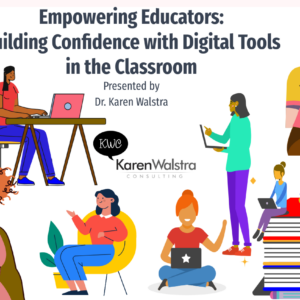In the 21st century, it is difficult to imagine our lives without technology – wherever you go, everyone is on their smartphones, tablets or laptops. But do these devices have a place in the classroom? A lot of research suggests that the effective use of technology can be an important tool in teaching. However, the emphasis is on the word “effective”. If technology is part of the curriculum, and not just an addition, it can have many benefits for you as a teacher and for your learners.
Facilitate administration tasks
In addition to teaching, today’s teachers have many additional responsibilities outside of the classroom including the planning and preparation of lessons, marking tasks and tests, and capturing marks. Technology can help with these administration tasks. Educational computer programs like Cami make it easy. The lessons are preplanned, the exercises are marked by the program, and you can download progress reports per learner, grade or term, or calculate the grade and class average at the click of a button.
Allow diversity in learning techniques
Learners can easily get bored if the same learning techniques are used repeatedly. Technology and applications, however, ensure that the learning experience remains new and interesting. It also allows you as a teacher to accommodate learners with visual, auditory and kinaesthetic learning styles. There are several ways in which technology can be used:
- Visual (see): Visual learners process new information by reading or viewing pictures and demonstrations. Educational videos, containing illustrations, diagrams and cartoons, can be used to visually represent concepts. CrashCourse is a popular YouTube channel that uploads educational videos across a variety of subjects.
- Auditory (hear): Auditory learners prefer to listen to explanations and say information aloud. Computer programs like Cami Reader use auditory instructions to help learners complete phonics exercises.
- Kinaesthetic (moving): Kinaesthetic learners remember information more easily when it is presented as an interactive game. Computer-based activities are suitable for kinaesthetic learners, as using a keyboard helps keep learners’ hands busy.
Make schoolwork fun
Even subjects that many learners are not particularly fond of like Mathematics can be enjoyable with the help of technology. Cami Maths is a fun and interactive educational software system that helps learners understand difficult mathematical concepts by playing interactive games. Because learners are actively participating in solving sums and problems, they are more likely to remember what they have learned.
Ensure that learners progress at their own pace
Just as learners have different learning styles, each learner also has his own pace at which he processes information. Using applications helps you ensure that learners progress at their own pace: learners who work quickly can work ahead while learners who need extra help can take more time to ensure that they understand the concepts before moving on to the next chapter. Wilmari Pretorius, an Afrikaans Home Language and First Additional Language teacher, writes that when learners work at their own pace, they feel a sense of personal control over the learning process, which can motivate them to work harder.
Prepare learners for the future
Whether you are for or against the use of technology in the classroom, one thing is certain – learners will have to deal with technology in the workplace. By exposing them to technology now and teaching them how to use technology to their advantage, can help them in future when they enter the workforce.
Are you ready to enjoy the benefits of using technology in your classroom and help learners develop 21st century skills? Visit Cami‘s website. Cami boasts a suite of highly effective CAPS-aligned computer programs, namely Cami Maths, Cami Reader, Cami Science, Cami Literacy, and Cami Perceptual Skills Builder. Available for Grade R to 12 in English and Afrikaans. Order a Cami program before 30 June 2019 and receive a 20% discount.
Sources:

 Building Confidence with Digital Tools in the Classroom
Building Confidence with Digital Tools in the Classroom 

